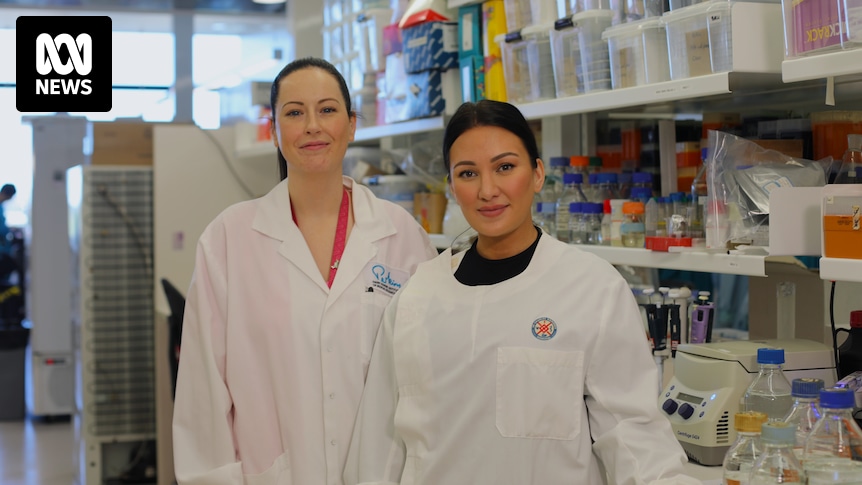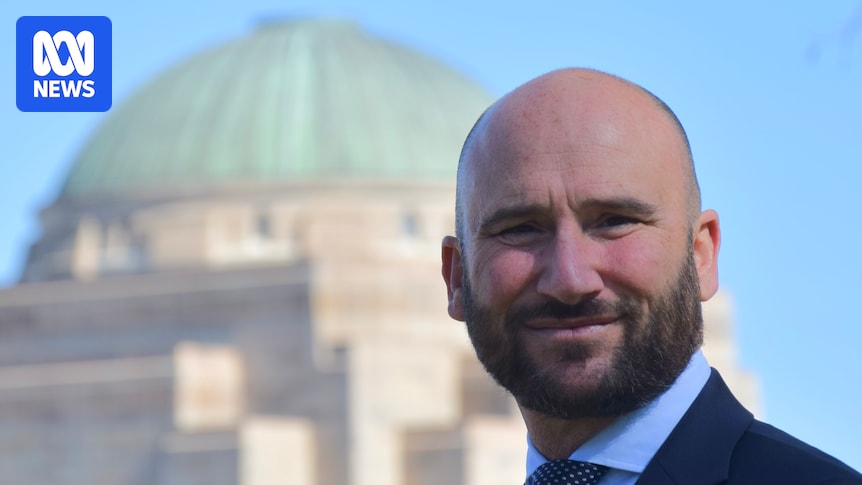One is a third-year medical student, the other is a hotel manager-turned scientist and together they’re on a mission.
Akaiti James and Sarah Walsh have endometriosis, a condition which occurs when tissue similar to the lining of the uterus grows outside it.
It has no cure and brings with it a world of pain.
“It’s pain bad enough that you vomit, or want to vomit,” Ms James said.
“If you don’t get on top of that pain quickly, it really gets out of control.”
Now the pair are on the frontline of efforts to improve the diagnosis and treatment of endometriosis, one of Australia’s most prevalent but least understood chronic conditions.
Bank of hope
Ms James and Ms Walsh are involved in the creation of a biobank — basically a big collection of biological samples — in this case of endometriotic tissue, removed from patients during surgery.
Ms James, who set up the operation in Perth, says she was inspired by a similar biobank which gathers samples from burns patients.
“I was doing my honours year with the Burn Injury Research Unit under Dr Mark Fear and Professor Fiona Wood, and they really supported me to go and start the endometriosis biobank,” she said.
“We want to really understand how and why endometriosis occurs…so that we can find better treatments and better ways to diagnose people with endometriosis that aren’t so invasive.”
While ultrasound and MRI scans can pick up some stages of endometriosis, patients often need to have laporascopic surgery to get a diagnosis.
The biobank collects samples of the lesions removed during that surgery and Ms Walsh has the job of chopping them up into tiny pieces and storing them in tissue flasks.
“What happens is the cells actually migrate out of the tissue and then grow and adhere to the bottom of the flask,” explained Ms James.
“We then remove those excess bits of tissue and we can keep culturing them and multiplying them until we have enough cells to perform experiments on.”
Dream of diagnosis without surgery
Ms Walsh once worked in the hospitality sector, but the chronic pain and fatigue from endo put an end to her career in the industry.
It took her 12 years to get a definitive diagnosis, with doctors previously suspecting urinary and kidney infections and irritable bowel syndrome.
At one point, she even had her appendix removed, only to find the symptoms continued.
Now, as a molecular biology student, she’s determined to uncover the mysteries of endo.
She’s studying the biobank samples to look for molecules and differences that may help explain why endometriosis happens.
“Every cell can speak to each other, they communicate,” she said.
“I’m trying to find out what they’re saying.”
She dreams about the day there’s a simple test for endo.
Loading Instagram content
“If we can figure out a blood test — ‘you have this marker, you could potentially have endo’ — and we can figure out what these [cells] are doing, we can treat endometriosis,” she said.
Ms James puts it into context.
“If you think about things like…melanoma, we know how the cells behave, how they start to move and invade,” she said.
“But we don’t know that about endometriosis. So it’s hard to create treatments when we don’t know that information.
“So, I think it’s the first step.
“Ultimately, I’d love to see a cure for endometriosis, but I also would love to see people who are going to get endometriosis identified early and then preventing the disease from progressing.”
‘It’s all encompassing’
Tegan Phillips has had severe pelvic pain around her periods since her early teens, but wasn’t diagnosed with endometriosis until she had surgery at 23.
Even after the ordeal of having an operation, her symptoms returned within a few months.
Now, after trying every form of treatment available, she is back on the waiting list for more surgery.
“It’s hard to think of an area of life that endo hasn’t had an impact on,” she said.
“It impacts on relationships, your sense of self, your ability to pursue hobbies, to pursue opportunities at work.
“It’s all encompassing, really.”
She welcomes the biobank as a tangible step towards making life better for future generations of women.
“There’s always the dream that it will lead to a cure, but certainly for better diagnostic tools and better treatments, it would be absolutely life-changing,” she said.
Demystifying the ‘enigma’
Dr Krish Karthigasu has been wrestling with the “enigma” of endo for years.
The consultant gynaecologist at King Edward Memorial Hospital in Perth says like many women’s health conditions, research into the disease has been historically underfunded.
But he says there has been big progress since a national action plan was released in 2018.
Advances in ultrasound and MRI mean more cases are now being diagnosed without the need for surgery, he said.
And, there’s been a boost to medical resources to alleviate growing demand for treatment.
But Dr Karthigasu says research projects, like the biobank, are vital to understanding more about the complex condition.
“The more biobank samples we have throughout the world, the more researchers can unlock the secrets,” he said.
Funding concerns
The biobank in Perth is one of a number that have started across the country.
It is part of an international pool of data held by the World Endometriosis Research Foundation (WERF).
One of the big challenges for the Perth biobank is securing on-going funding.
Ms James is also the deputy president of Endometriosis WA and is pushing for a paid research assistant to help with the arduous task of processing samples.
“If we did have someone who was paid to be a research assistant, we could really broaden the number of samples that we process and also take them from different sites,” she said.
About $87 million has been spent by the Commonwealth on research, awareness programs and over 20 dedicated clinics across Australia since the national action plan.
But, advocates say given the huge burden of the disease — estimated to cost the Australian economy almost $10 billion a year — the investment should be even higher, in order to catch up with the funds allocated to other chronic health conditions.
About $1 billion has been allocated to diabetes research since 2000 and $220 million to heart disease and stroke over ten years from 2019.
The WA Department of Health says over $3 million has been allocated towards women’s health research, including $160,000 to Curtin University for research relating to endometrial pain.
Loading
Posted , updated



